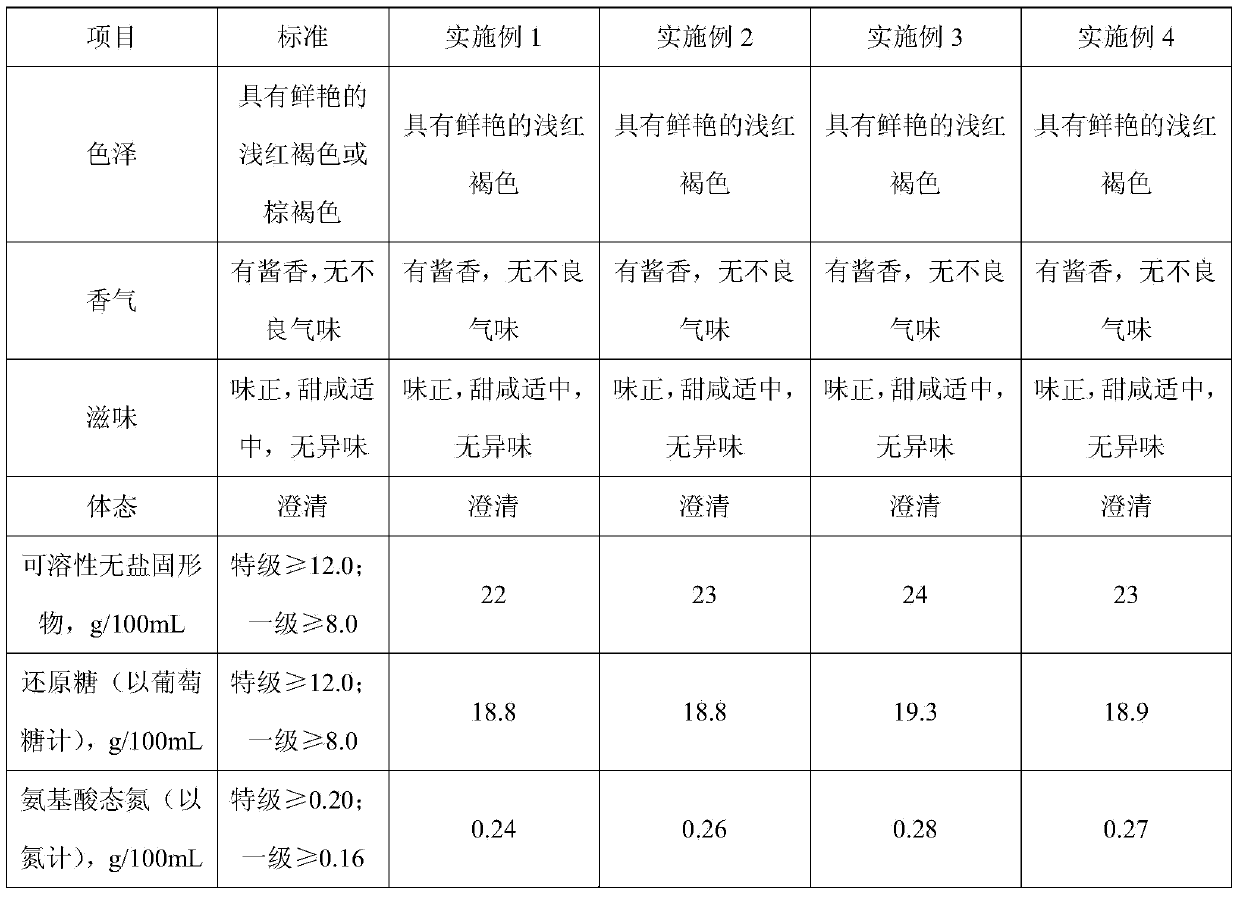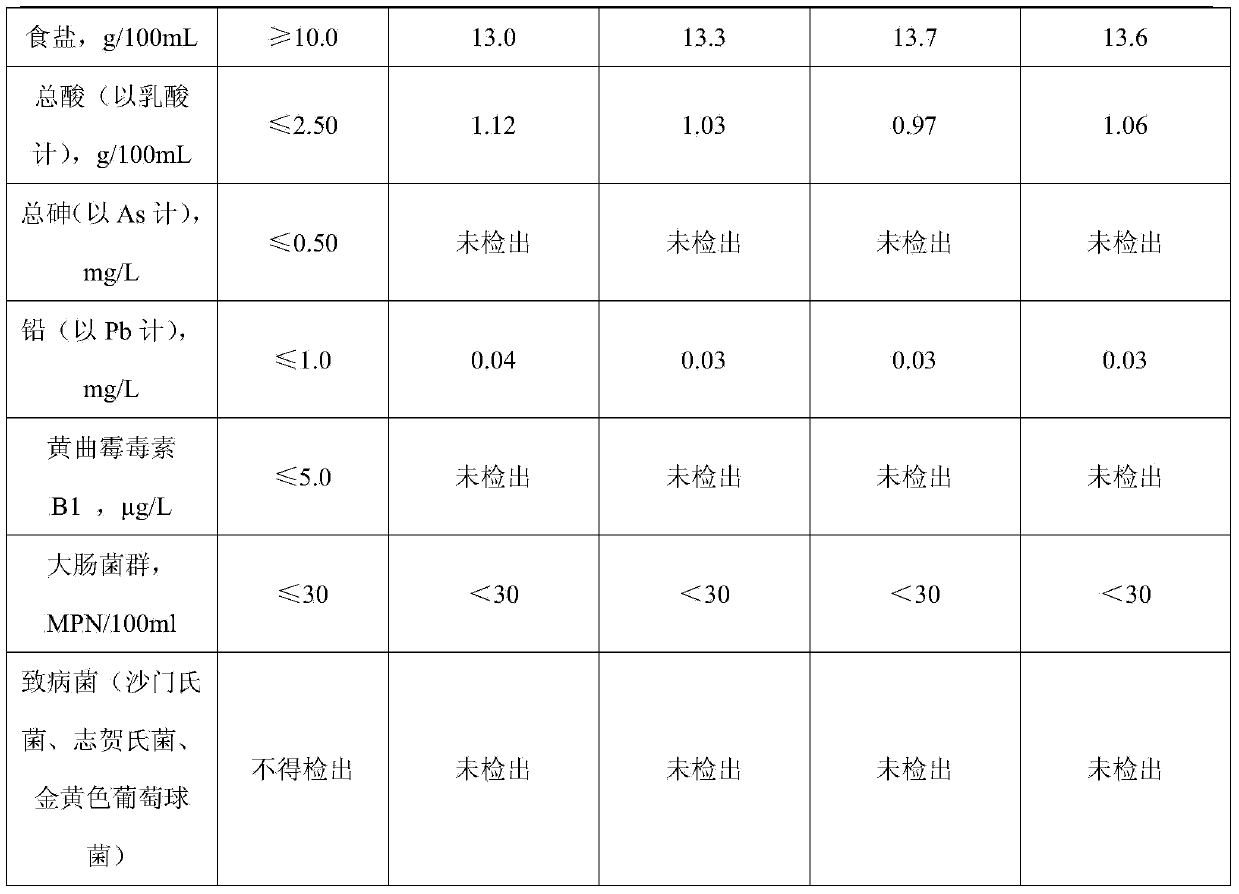Sweet oil condiment
A condiment and sweet oil technology, which is applied in the field of food oil preparation, can solve the problems of great influence on the quality of sweet oil, long preparation process cycle, and difference in quality of sweet oil, so as to improve the utilization rate of raw materials, reduce physical labor intensity, improve The effect of labor efficiency
- Summary
- Abstract
- Description
- Claims
- Application Information
AI Technical Summary
Problems solved by technology
Method used
Image
Examples
Embodiment 1
[0032] A sweet oil condiment prepared according to the following steps:
[0033] (1) Raw material processing: the raw material is processed into flour after removing impurities from wheat.
[0034] (2) Slurry: Add 900kg of 14 ° Be' salt water to 500kg of flour for mixing to obtain flour slurry.
[0035] (3) Liquefaction: Put the finished flour slurry into a stainless steel liquefaction tank and keep it warm for 30 minutes at 70°C;
[0036] (4) Cooking: Cook the liquefied flour slurry obtained in step (3) at 98° C. for 10 minutes.
[0037] (5) Inoculation: the temperature of the liquefied flour slurry after cooking is reduced to 40°C, and the dry flour by mass ratio: the mixed koji is inserted into the mixed koji in a ratio of 49:7;
[0038] The koji mix is prepared as follows:
[0039] 1) Koji material 1: Mix soybean meal and bran at a mass ratio of 1:1, moisten the water for 12 minutes, and then steam the material. Use the N·K type rotary steaming ball to steam the mater...
Embodiment 2
[0050] A sweet oil condiment prepared according to the following steps:
[0051] (1) Raw material processing: the raw material is processed into flour after removing impurities from wheat.
[0052] (2) Slurry: Add 1235kg of 13 ° Be' salt water to 650kg of flour for mixing and slurry to obtain flour slurry.
[0053] (3) Liquefaction: Put the finished flour slurry into a stainless steel liquefaction tank, and keep it warm for 30 minutes at 73°C;
[0054] (4) Cooking: Cook the liquefied flour slurry obtained in step (3) at 99° C. for 7 minutes.
[0055] (5) Inoculation: the temperature of the liquefied flour slurry after cooking is reduced to 42°C, and the dry flour by mass ratio: the mixed koji is inserted into the mixed koji in a ratio of 49:7;
[0056] The koji mix is prepared as follows:
[0057] 1) Koji material 1: Mix soybean meal and bran at a mass ratio of 29:24, moisten the water for 15 minutes, and then steam the material. Use the N·K type rotary steaming ball to s...
Embodiment 3
[0068] A sweet oil condiment prepared according to the following steps:
[0069] (1) Raw material processing: the raw material is processed into flour after removing impurities from wheat.
[0070] (2) Slurry: Add 1500kg of 14 ° Be' salt water to 750kg of flour for mixing to obtain flour slurry.
[0071] (3) Liquefaction: Put the finished flour slurry into a stainless steel liquefaction tank and keep it warm for 30 minutes at 82°C;
[0072] (4) Cooking: Cook the liquefied flour slurry obtained in step (3) at 100° C. for 5 minutes.
[0073] (5) Inoculation: the temperature of the liquefied flour slurry after cooking is reduced to 45°C, and the dry flour by mass ratio: the mixed koji is inserted into the mixed koji in a ratio of 50:7;
[0074] The koji mix is prepared as follows:
[0075] 1) Koji material 1: Mix soybean meal and bran according to the mass ratio of 39:24, moisten the water for 15 minutes, and then steam the material. Use the N·K type rotary steaming ball to ...
PUM
 Login to View More
Login to View More Abstract
Description
Claims
Application Information
 Login to View More
Login to View More - R&D
- Intellectual Property
- Life Sciences
- Materials
- Tech Scout
- Unparalleled Data Quality
- Higher Quality Content
- 60% Fewer Hallucinations
Browse by: Latest US Patents, China's latest patents, Technical Efficacy Thesaurus, Application Domain, Technology Topic, Popular Technical Reports.
© 2025 PatSnap. All rights reserved.Legal|Privacy policy|Modern Slavery Act Transparency Statement|Sitemap|About US| Contact US: help@patsnap.com


